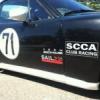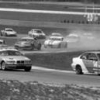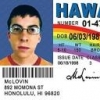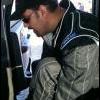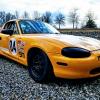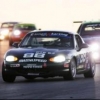ODB - Ol' Dirty Bastard
OBD - On Board Diagnostics
Though others were more helpful than Rob (

love the quick TLA translation though!) everyone seems to be on the same page with their suggestions.
- Get collections of data from other, faster, drivers.
- Hire someone to review with you the data you're capturing.
- Seat time, seat time, seat time!
I'm a firm believer in all three and as comparison, here's where I was on a few tracks my first year and then my second year was with data.
2010NJMP-Thunderbolt: 1:40.762
Watkins Glen (long): 2:27.616
Summit Point: 1:30.647
2011NJMP-Thunderbolt:1:38.644
Watkins Glen (long): 2:24.251 (.6 slower than the class winner's fastest lap; I qualified with a 2:27.041 if that's any more justification for data as I didn't have the data set before qualifying)
Summit Point: 1:29.799
Granted, some of the improvement observed needs to be attributed to the additional seat time accrued but having the data literally "opens the curtains" on what you're doing wrong and where.
Now, if you're unable to afford a coach or can't get one with you 'at track', here's the one beginner data tip I've learned:
Don't focus on "everything" but start with the basics. The software exposes entirely too much data for a beginner to absorb and you'll find yourself 'drinking from the firehose'.
For me it was "Where are you accelerating? Where are you braking? Where are you coasting?"
For the time being, don't worry about throttle position, braking pressures, it's minutiae at this point and will only distract you. Instead focus on timing and gross levels of transitions. We're looking to take the big chunks of time out of your lap initially to both keep it manageable and showing progress. The accelerometers in these devices are very sensitive already and can detect even the small movements you may/may not be doing (or possibly doing incorrectly). Are you braking at the same place with the same level of force? (negative acceleration G's will tell you) Are you accelerating at the same place and with the same level of input? (again, positive acceleration G's will tell you)
That should be enough for you to work on over a single weekend at a single track. Find your weak spots/corners and zero in on improving those, file the data & muscle memory away and head to the next track the next weekend.
Getting those individual data points from your specific product will probably take assistance from someone more experienced with the software (I'm a Traqmate person) but once you've figured out these initial problem areas (and running consistent lap times) you can then dig further into the specifics of certain areas where a coach has identified you're leaving time on the table.
One last thing is to always have as close to the same starting setup as possible so you know you're not "fighting the car" and learning bad habits. Someone mentioned getting a solid initial setup on your car before returning to the track - I couldn't second/third that enough. Stabilize the platform first, learn that platform then improve your times. Once you've exhausted time improvements then you can return to changes to the platform to go faster.
I hope that helps and have fun!
Brandon




 Sign In
Sign In Create Account
Create Account








 Back to top
Back to top Report
Report
